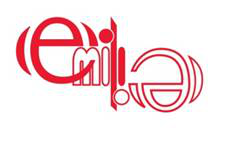Dr
Pierre DELAHAYE
(GANIL)
21/03/2016 14:20
EMILIE related project
The EMILIE project aims at improving the charge breeding techniques with both Electron Cyclotron Resonance Ion Sources (ECRIS) and Electron Beam Ion Sources (EBIS) for European Radioactive Ion Beam (RIB) facilities. This talk will review the objectives of the EMILIE project which motivated the different developments which will be discussed along the workshop.
Richard Vondrasek
(Argonne National Laboratory)
21/03/2016 14:50
The efficient and rapid production of a high-quality, pure beam of highly charged ions is at the heart of any radioactive ion beam facility. An ECR charge breeder, as part of the Californium Rare Ion Breeder Upgrade (CARIBU) program at Argonne National Laboratory, was developed to fulfill this role. The charge breeding efficiency and high charge state production of the source were at the...
Dr
Edward Beebe
(Brookhaven National Laboratory)
21/03/2016 15:20
M.
Michael A. Blessenohl
(Max-Planck-Institut für Kernphysik), M.
Stepan Dobrodey
(Max-Planck-Institut für Kernphysik)
21/03/2016 16:20
Currently, the TRIUMF facility is upgraded with ARIEL (Advanced Rare IsotopE Laboratory), which will include a new EBIS (Electron Beam Ion Source) for charge breeding of rare isotopes. Heavy elements prepared into a high charge state are required to keep the mass-to-charge ratio A/Q low, which is essential for the two post-accelerators ISAC (Isotope Separator and ACcelerator) I and II. Because...
Dr
Emil Traykov
(IPHC)
21/03/2016 16:50
EBIS charge breeding technique
The goal of *WP2* of the *EMILIE* project was to simulate, design, build and commission a device which operates as a debuncher using high intensity *n+* bunched beams from *EBIS* charge breeders and which ejects continuous-wave (*CW*) ion beams.
The advantages of the *EBIS* breeding technique compared to the *ECR* method include formation of pure samples and very high charge states whereas...
Dr
Hannu Koivisto
(Department of Physics, University of Jyväskylä)
22/03/2016 09:00
An anomalous global efficiency of the extracted 1+ beam was discovered at the LPSC charge breeder. It was realized that a fraction of injected 1+ beam propagates through the charge breeder plasma without being captured and ionized. As a result of the further experiments and theoretical considerations it was realized and confirmed that 1+ beam injected into the charge breeder plasma can be used...
M.
JULIEN ANGOT
(LPSC / CNRS)
22/03/2016 09:30
LPSC, Université Grenoble – Alpes, CNRS/IN2P3, Grenoble, France
In the frame of the Emilie project, in order to better understand the physics of the Charge Breeder process, the LPSC acted on several levers. First, the 1+N+ test bench was used to make experiments with 3 versions of the Phoenix Charge Breeder: LPSC, SPES and SPIRAL1. In parallel, two 1+ electron cyclotron resonance ion...
M.
Lukasz Standylo
(HIL, Warsaw University)
22/03/2016 10:00
A well-known method of improving the operation of ECRIS with solid state materials is lining the plasma chamber to recover neutralized plasma material deposited on the walls. This method is used mainly in production of metallic ions by oven technique. The efficiency of this process can be improved by better understanding mechanisms of ECR plasma interactions with chamber wall materials....
Dr
Alessio Galatà
(INFN-Laboratori Nazionali di Legnaro)
22/03/2016 11:00
Prof.
Gilles Ban
(Laboratoire de phsique corpusculaire de caen)
23/03/2016 09:00
The talk will review the 20 years effort from LPC Caen to provide experiments with ion and atoms traps. The physics made with these traps are precision measurements
to tests the standard model, high intensity radioactive ion, ion atoms collisions….Several news technological solution have been developed in order to reach the required
users specifications.
Dr
Alessio Galatà
(INFN-Laboratori Nazionali di Legnaro)
23/03/2016 09:30
SPES is an INFN project supported by two Italian national laboratories, Laboratori Nazionali di Legnaro (LNL, Legnaro, Padova) and Laboratori Nazionali del Sud LNS, Catania), and is currently under way at LNL. Aim of this project is the production, ionization and post-acceleration of radioactive ions to perform forefront research in nuclear physics. To this scope, the project chose an...
Dr
Laurent Maunoury
(CNRS GANIL)
23/03/2016 10:00
ECR charge breeding technique
In the framework of the SPIRAL1 upgrade under progress at the GANIL lab, the charge breeder based on a LPSC Phoenix ECRIS, first tested at ISOLDE [1] has been modified as to benefit of the last enhancements of this device from the 1+ / n+ community [2].
Prior to its installation in the midst of the low energy beam line of the SPIRAL1 facility, it has been tested at the 1+/n+ LPSC test bench...
Dr
David Mascali
(INFN-LNS)
ECR charge breeding technique
Numerical simulations are powerful tools for optimizing the wave-to-plasma interaction process in Electron Cyclotron Resonance Ion Sources. Several alternative methods of plasma heating like Frequency Tuning Effect (FTE) or Two Frequency Heating (TFH) can be exploited by a proper matching of the incoming RF power with the plasma electrons. This supports the increase of beam currents and charge...

